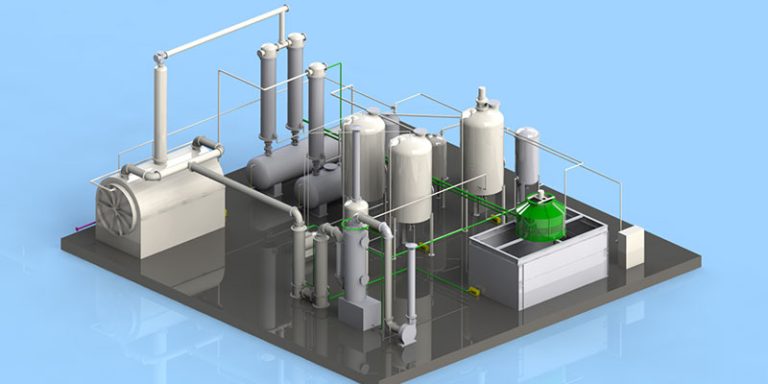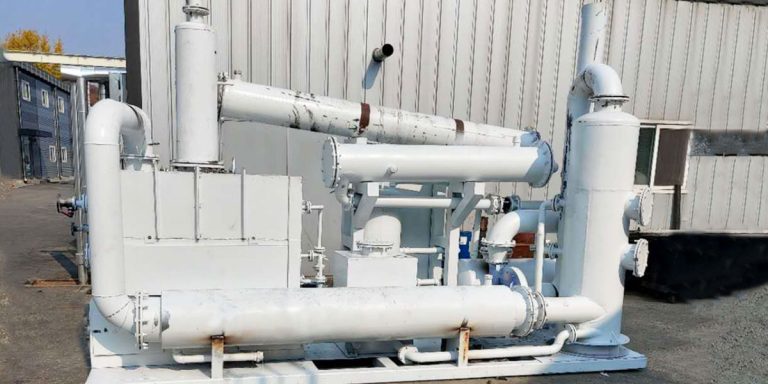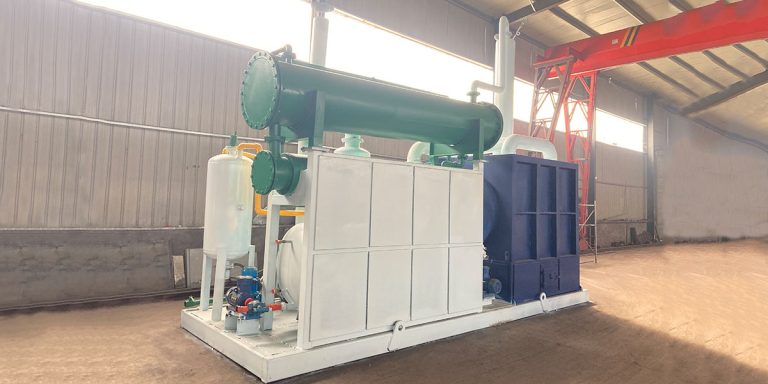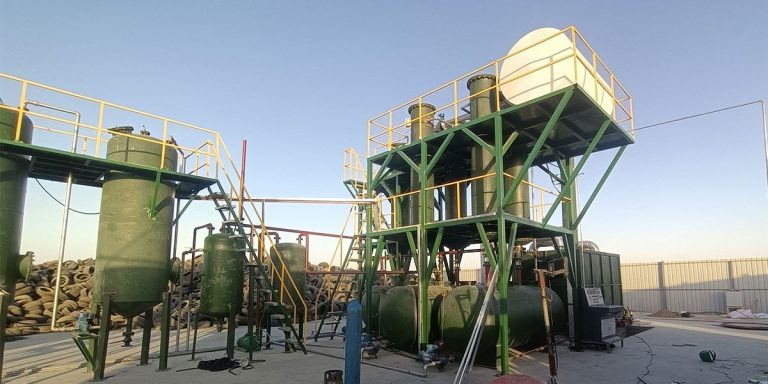Pyrolysis oil distillation plant is used to further separate and purify pyrolysis oil, waste engine oil, used transformer oil, or used lubricating oil. So, it is also called Waste Oil Distillation Plant, Used Oil Distillation Plant.
Pyrolysis oil, also known as biocrude or bio-oil. It is neither gasoline nor diesel, in fact it is an industrial fuel. Pyrolysis oil is an fuel oil product obtained by converting organic matter (plastics, rubber, oil sludge) by pyrolysis plant. The waste oil and pyrolysis oil are further purified into bright non-standard diesel or non-standard gasoline by pyrolysis oil distillation plant. This light fraction oil can be widely used in heavy-load low-speed diesel engines, ships, diesel generators, etc.

Waste Oil Distillation Machine
The Waste Oil Distillation Machine refines the pyrolysis oil through refining processes. The flowing of waste oil refing process includes Sediment, High Temperature Distillation, Acid Washing, Alkali Washing, Activated Clay Treatment and Filtrering.
If you’re interested in purchasing or learning more about distillation equipments, you can contact Mingjie Environmental Protection Equipment Manufacturer. Let me know if you need help finding specific models!
Pyrolysis Oil Distillation Plant for Sale
| Model | MJZ-2 | MJZ-3 | MJZ-6 | MJZ-10 | MJZ-20 |
| Capacity | 1-2T/Batch | 3T/D | 6T/D | 10T/D | 20T/D |
| Power Consumption | 10kw | 15kw | 22.5kw | 42kw | 46kw |
| Operation | Batch and skid-mounted | Batch | |||
| Raw Material | Used engine oil, pyrolysis oil, used transformer oil, used lubricating oil | ||||
| Final Products | Non-standard diesel, diesel oil, base oil | ||||
| Oil Yield Rate | 80-85% | ||||
| Working Pressure | Negative | ||||
| Construction | Vertical type | ||||
| Cooling Method | Water cooling | ||||
| Fuel for Heating | LPG, Diesel, Natural gas | ||||
If you’re interested in purchasing or learning more about pyrolysis oil distillation plant, you can contact Mingjie Pyrolysis Plant Manufacturer. Let me know if you need help finding specific models!

Main Components of Pyrolysis Oil Distillation Plant
- Heating system: There are many heating methods such as electric heating, gas heating or thermal oil heating.
- Distillation tower: The distillation tower is the core equipment used to separate different components in pyrolysis oil.
- Condensation system: Condenses the steam generated during the distillation process into liquid.
- Acid and alkali System: Used to store and handle acid and alkali solutions. Acid washing tanks are used to remove metal oxides, scaling or residues. Alkali washing tanks are mainly used to neutralize acidic components in pyrolysis oil and improve oil quality.
- Control system: The automated control system is used to monitor and adjust parameters such as temperature, pressure, and flow. It ensures the stability and safety of the distillation process.
- Waste gas treatment system: Treats the waste gas generated during the distillation process, usually including condensation, adsorption or combustion.
Pyrolysis Oil Refining Process
1. Sedimentation process
Waste oil or pyrolysis oil is stored in a larger storage tank. After a period of sedimentation, large impurities are settled at the bottom, and the waste oil with less impurities on the upper layer is effectively utilized.
2. Distillation
Waste oil enters the pyrolysis oil distillation reactor through a hot oil pump and begins to heat. Under high temperature, liquid oil is converted into a mixture of oil and gas. After passing through the condenser, the light oil is cooled into liquid oil and stored in an oil tank. This pyrolysis oil distillation process separates the light oil from impurities.
3. Pickling
Pickling is to mix a certain amount of concentrated sulfuric acid with oil. The impurities in the oil are precipitated and the color and smell of the oil are improved. The concentration of H2SO4 should be above 98%. Concentrated sulfuric acid has strong oxidizing properties and can undergo sulfonation, oxidation, and esterification reactions with compounds in impurities. Therefore, this pickling process has a relatively significant desulfurization effect.
4. Alkali washing
The main purpose of alkaline washing is to neutralize the acidity in the pickling process and make the pH value of light oil 7.
5. Activated clay treatment
Activated clay has a strong chemical and physical adsorption effect on impurities. It helps to improve the color and smell of oil.
6. Filtration
The filter press squeezes the oil through the filter cloth to filter out impurities. The light oil will be clearer after the filtration process.




